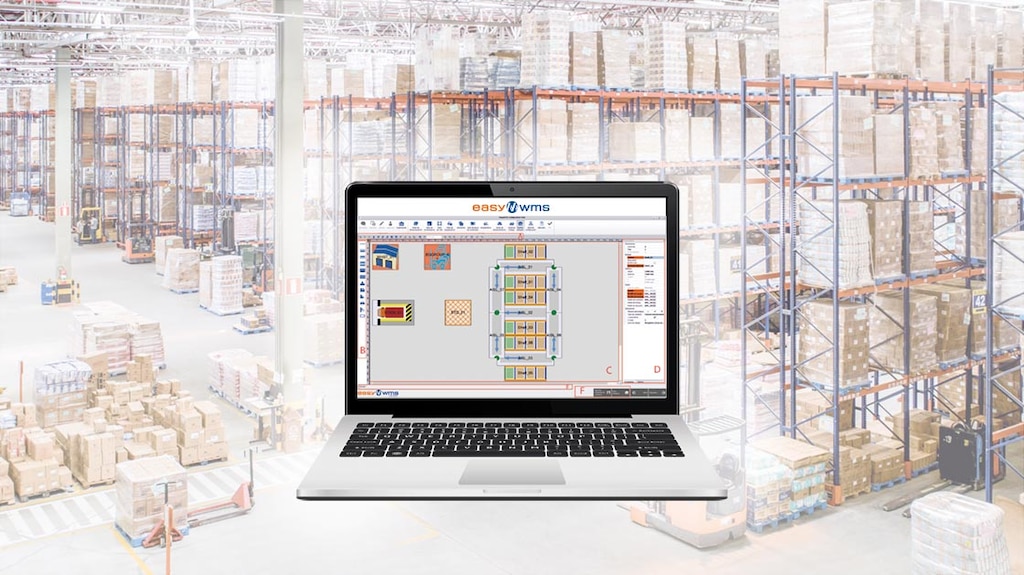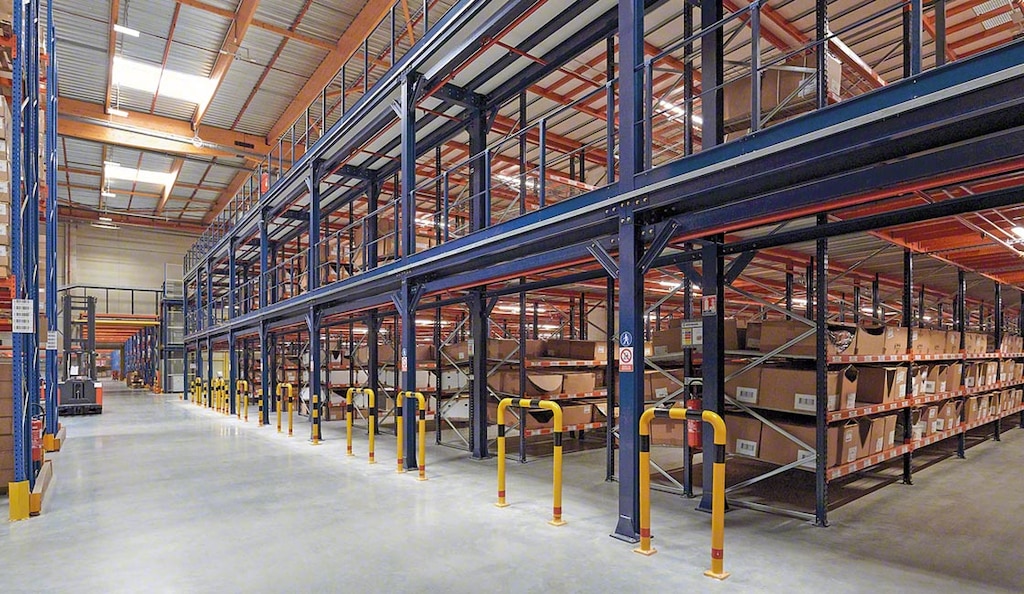
Digital twin examples: 3 cases in the logistics sector
Digital twin technology combines the Internet of Things with machine learning to simulate the behavior of structures, systems, and machines. Logistics has relied on this technology with different aims, for example, to digitally reproduce the behavior of a clad-rack building, to predict how to cope with peaks in demand, and to obtain a 3D view of both the warehouse and operator workflows.
In this post, we analyze the application of digital twin technology in the logistics sector with 3 examples that reflect the way this tool is helping to optimize the design, construction, and operation of warehouses.
What are digital twins?
A digital twin is a virtual replica of a process, machine, or object that simulates the exact behavior of its real counterpart. Through technologies such as the Industrial IoT and big data, the object or process is digitally reproduced so as to monitor them and analyze how they respond in different situations.
This technology creates high-precision animated representations to examine the efficiency of a logistics or production process and assess its viability in a warehouse. This is done by means of cyber-physical systems: mechanisms that connect the physical objects with the virtual software to control and gather all the available information about a process.
Digital twins offer two major advantages: on the one hand, they create hypotheses and scenarios to anticipate any kind of errors and situations; on the other, they contribute towards optimizing the performance of various kinds of processes and operations.

How can digital twins benefit logistics?
There’s no shortage of digital twin examples in the logistics sector. The application of this technology makes it possible to optimize warehouse processes, reduce operating costs, bring errors down to a minimum, and foster efficient logistics planning.
Digital twins serve to:
- Check the stability of the warehouse structure and study its behavior during seismic or other extreme weather events.
- Assess the efficiency of logistics processes and the introduction of logistics planning changes designed to boost the facility’s productivity.
- Facilitate a more agile and effective installment of the warehouse management system (WMS).
This last example is one of the clearest ways digital twins can become a key logistics tool. During the software implementation process, digital simulation ensures the smooth deployment of the WMS by replicating in advance all machine and goods movement flows taking place in the logistics facility. This facilitates the detection of errors and inefficiencies.

Digital twin technology in logistics: 3 examples
Below are 3 examples that reflect the application of digital twins to optimize productivity and safety in logistics facilities.
Structure calculation software
The main intralogistics solutions providers use a structure calculation program to guarantee the stability of the storage systems, proper warehouse layout design, and compliance with the current standards in each country.
The digital twin created by the software is subjected to adverse weather conditions such as rain, wind, and snow. This program is particularly valuable in regions with a high seismic risk, as its use in the warehouse design and implementation phases ensures the safety of the structure, the storage systems, the goods, and, most importantly, the workers.
The Mecalux Group employed this type of software to build the Rossignol Group’s new facility in Saint-Étienne-de-Saint-Geoirs, France, to improve the safety of the structure. A digital twin — configured from data such as warehouse design, dynamic loads, and the storage system to be installed — checked the strength of the racks against a possible earthquake. Based on this, our company installed earthquake-proof racking that meets the applicable EN 16681 European standard.
Automatic Warehouse Studio (AWS)
The Mecalux Group uses Automatic Warehouse Studio software for its automated projects. This program provides a 3D reproduction of the warehouse. The AWS simulator checks and validates the operation of the automatic equipment before installing the control program in the physical warehouse. AWS shortens the time it takes to implement an automated storage and retrieval system (AS/RS) and ensures that the solution proposed by our company completely adapts to the customers’ logistics planning.
By means of a SCADA (supervisory control and data acquisition) tool, AWS gathers data in real time from all the machinery management software (PLCs – programmable logic controllers) operating in the facility. This allows the logistics manager to anticipate any problem that might arise in the warehouse.
This software was applied in the project of one the largest rack-supported buildings in Europe, which our company built for Congelados Navarra in Fustiñana, Spain. The digital representation generated served to control and validate the proper operation of the warehouse before installing the equipment. Synced with Easy WMS, this program receives information in real time on the performance of the machines to avoid mismatches and breakdowns in warehouse planning.
Easy Builder and Easy Assistant
The Easy WMS warehouse management system has its own digital twin tools to facilitate its implementation: Easy Builder and Easy Assistant. These two IT programs complement the design and deployment of the software in the customer’s facility, guaranteeing the intervention of Easy WMS in all warehouse operations: goods receipt, product slotting, and order preparation and dispatch, among others.
- Easy Builder. This developers’ tool makes it possible to parametrize the WMS based on the customer’s logistics planning. Companies and partners with their own IT department can implement computer developments to the WMS, such as workflow redistribution.
- Easy Assistant. This advanced functionality creates a digital copy of the warehouse to simulate new configurations for the facility’s design or for location strategies. Easy Assistant functions include the assignment of new picking methods and the implementation of changes to product turnover and to the warehouse distribution and layout.
Additionally, during the WMS deployment phase, our engineers can program Easy WMS in multiple environments to digitally simulate potential logistics improvements. This is the case of the software roll out in the new Danone distribution center in Valdemoro, Spain. For this project, Easy WMS was programmed in three different environments: production, used for day-to-day warehouse operations; backup, to have a copy of all the information in the event of an incident; and test, to digitally simulate improvements before implementing them in the facility.
Safety and productivity: objectives of digital twins in logistics
In this post, we’ve seen examples of how digital twins provide logistics with tools that ensure safety and productivity in all stages. Thanks to these digital twins, companies are armed with more resources to successfully implement conventional and automated storage systems, as well as warehouse management systems.
If you’re ready to leverage this technology and apply it to your warehouse, don’t hesitate to contact us. Our team of expert engineers will propose the best logistics solution for your business.
